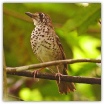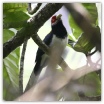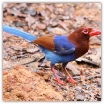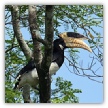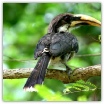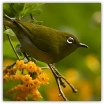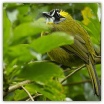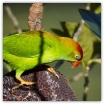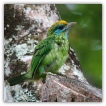
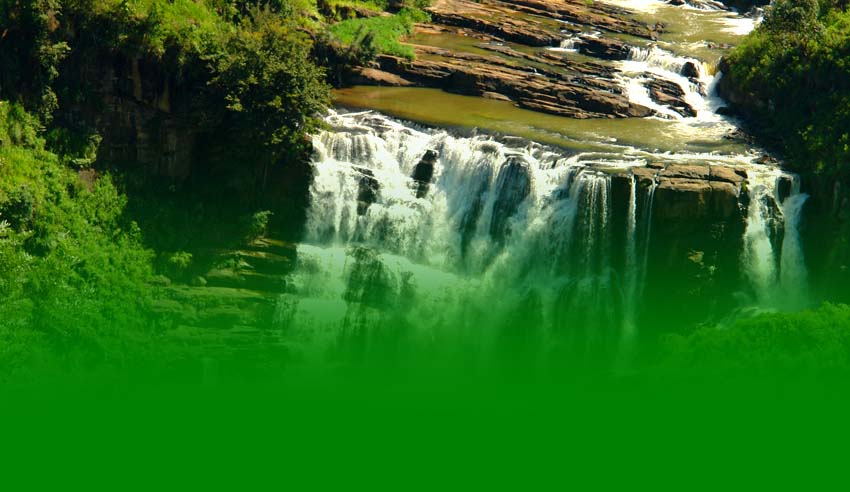
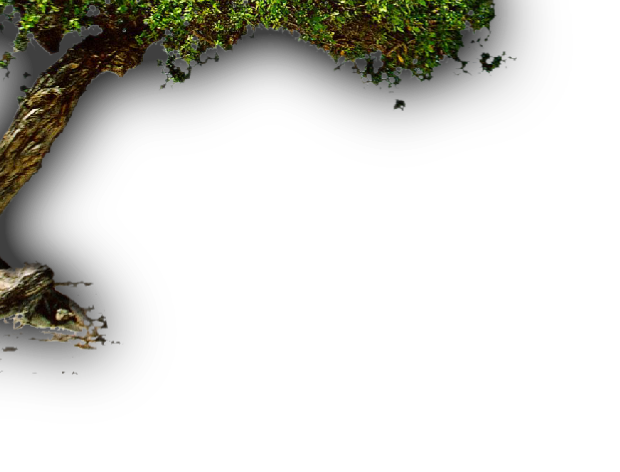




ENDEMIC BIRDS

A rare ground dwelling species is present in the dense forests of the southern part of the island. Essentially a forest bird that can be found infrequently...



 Sri Lanka Facts
Sri Lanka Facts




For a very small island, Sri Lanka holds a high density of avian species. Over 440 birds have been recorded in the island. This includes the 33 species which are found nowhere else in the world plus the seasonal migrants. Except for a handful of species, observing birds in Sri Lanka is relatively easy for the birds themselves are not so shy.
This itinerary concentrates on seeing all the Endemics and near endemics of the island plus some spectacular species from the region like the Pied Thrush, Indian Pitta and the Ceylon Frogmouth, half-way between a Nightjar and a Potoo. Albeit the focus on endemics, this tour also provides a great introduction to Oriental birdwatching for freshers to this part of the globe.
Day 1 (in Sri Lanka). Arrival and transfer to Kitulgala.
The Kelani Valley Forest Reserve across the river in Kitulgala had been established to preserve a part of the watershed of the Kelani River. Kitulgala which is also famous as it was the location for the 1957 David Lean movie ‘The Bridge on the River Kwai’ is home to many of Sri Lanka's lowland endemic bird species.
Spend the afternoon birding in Kitulgala.
Species to look for are Ceylon Green-pigeon, Ceylon Hanging-parrot, Layard's Parakeet, Green-billed Coucal, Serendib Scops-owl, Chestnut-backed Owlet, Ceylon Frogmouth, Ceylon Grey Hornbill, Yellow-fronted Barbet, Black-capped Bulbul, Spot-winged Ground-thrush, Ceylon Rufous Babbler, Legge's Flowerpecker and Black-throated Munia.
Lunch, dinner and overnight at a hotel/guest house in Kitulgala.
_____________________________________________________
Day 2. Kitulgala.
After breakfast full day birding in Kitulgala.
Lunch, dinner and overnight stay at a hotel/guest house in Kitulgala.
_____________________________________________________’
Day 3. Kitulgala – Sinharaja.
After breakfast, spend a couple of hours birding in the area and leave for Sinharaja Rainforest driving via Ratnapura, the City of Gems. Lunch en route.
Spend the afternoon bird watching around the lodge which is located in the Kudawa village adjacent to the rainforest.
pecies to lookout for: Ceylon Green-pigeon, Ceylon Hanging-parrot, Layard's Parakeet, Yellow-fronted Barbet, Black-capped Bulbul and Ceylon Rufous Babbler.
Dinner & overnight stay at a lodge near Sinharaja.
_____________________________________________________
Day 4. Sinharaja.
Full day birding in Sinharaja Rainforest with picnic lunch.
Sinharaja is Sri Lanka’s last remaining rainforest (A UNESCO World Heritage Wilderness Area) which is famous for Sri Lanka’s lowland endemic birds and mixed species flocks which according to a study carried out over many years, have an average of over 40 individual birds. This number makes this one of the world's largest mixed species bird flocks if not the largest.
Birding highlights include Ceylon Spurfowl, Red-faced Malkoha, Serendib Scops-owl, Chestnut-backed Owlet, Ceylon Frogmouth, Malabar Trogon, Spot-winged Ground-thrush, Ceylon Scaly Thrush, Ashy-headed Laughingthrush, Ceylon Scimitar-babbler, Ceylon Rufous Babbler, Legge's Flowerpecker, White-faced Starling, Ceylon Hill-myna, Black-throated Munia, Ceylon Crested Drongo and Ceylon Blue Magpie
Dinner & overnight stay at a lodge near Sinharaja.
_____________________________________________________
Day 5. Sinharaja.
After breakfast full day birding in Sinharaja Rain Forest.
Lunch, dinner and overnight stay at a lodge near Sinharaja.
_____________________________________________________
Day 6. Sinharaja – Udawalawe/Embilipitiya.
After breakfast, spend a couple of hours birding in the area and leave for Udawalawe or Embilipitiya to do an afternoon Jeep Safari in the Udawalawe National Park.
Udawalawe is a very popular national park for its Elephants and birds. The park is a mixture of abandoned Teak plantations, grassland, scrub forest and some riparian forest along the rivers ‘Walawe’ and ‘Mau Ara’. Udawalawe is probably the best place to see wild herds of Elephants in tightly-knit family groups of up to two or three generations.
Key species of birds to look for in the park are Spot-billed Pelican, Lesser Adjutant, White-bellied Sea-eagle, Grey-headed Fish-eagle, Crested Hawk-eagle, Barred Buttonquail, Orange-breasted Green-pigeon, Sirkeer Malkoha, Blue-faced Malkoha, Malabar Pied Hornbill, Blyth's Pipit and Ceylon Woodshrike.
Possible Mammals: Toque Monkey, Hanuman Langur, Golden Jackal, Ruddy Mongoose, Asian Elephant, Spotted Deer, Water Buffalo, Sri Lankan Giant Squirrel and Indian Hare.
Dinner & overnight stay at a hotel near Udawalawe (or Embilipitiya).
_____________________________________________________
Day 7. Udawalawe/Embilipitiya – Nuwara Eliya.
After an early breakfast proceed to Nuwara Eliya birding en route.
Lunch on the way.
In the afternoon visit the Victoria Park for for Himalayan migrants Kashmir Flycatcher, Pied Thrush, Indian Pitta and Indian Blue Robin. Other highlights include Yellow-eared Bulbul, Sri Lanka White-eye and Dusky Blue Flycatcher.
Dinner & overnight stay at a hotel in Nuwara Eliya.
_____________________________________________________
Day 8. Nuwara Eliya.
A pre-dawn start to reach Horton Plains National Park at first light (with picnic breakfast) to look for the highland specialities.
Horton Plains National Park is a protected area in the central highlands of Sri Lanka and is covered by montane grassland and cloud forest. This plateau at an altitude of 2,100–2,300 meters (6,900–7,500 ft) is rich in biodiversity and many species found here are endemic to the region. The Horton Plains are the headwaters of three major Sri Lankan rivers, the Mahaweli, Kelani and Walawe. The plains' vegetation is grasslands interspersed with montane forest.
Species to lookout for: Ceylon Woodpigeon, Yellow-eared Bulbul, Common Blackbird, Ceylon Whistling-thrush, Kashmir Flycatcher, Dusky Blue Flycatcher and Sri Lanka Bush-warbler.
Possible Mammals: Purple-faced Leaf Monkey, Sambar and Dusky Striped Squirrel.
Return to Nuwara Eliya for lunch and spend the afternoon birding around Nuwara Eliya.
Dinner & overnight stay at a hotel in Nuwara Eliya.
_____________________________________________________
Day 9. Nuwara Eliya – Kandy.
After breakfast leave for Kandy visiting a Tea Factory on the way.
After lunch in the hotel visit Peradeniya Botanical Garden where possibly Sri Lanka’s largest Flying Fox roost can be seen.
Bird species to look for are Ceylon Hanging-parrot, Alexandrine Parakeet, Layard's Parakeet, Common Hawk-cuckoo, Indian Pitta, Forest Wagtail and Large Cuckooshrike.
Lunch, dinner and overnight stay at a hotel in Kany.
_____________________________________________________
Day 10. Kandy – Airport.
After an early breakfast visit Udawatta Kele Sanctuary.
Udawatta Kele Sanctuary, often spelled as Udawatta Kele, is a historic forest in the city of Kandy situated behind the famous Temple of the Tooth Relic ‘Dalada Maligawa’. The extent of this forest is about 257 acres and the vegetation is mostly plantation and secondary formations. This harbors a number of endemic bird species inside a total of over 80 species.
Species to lookout for: Emerald Dove, Ceylon Hanging-parrot, Layard's Parakeet, Yellow-fronted Barbet, Ceylon Small Barbet, Crimson-backed Flameback, Tickell's Blue Flycatcher, Indian Blue Robin, White-rumped Shama, Brown-capped Babbler and Common Hill-myna.
After lunch transfer to a hotel near Katunayake for dinner & transfer to Airport for departure.
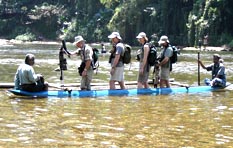
Kitulgala
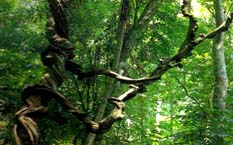
Sinharaja
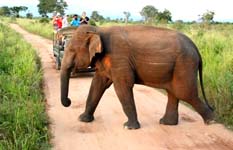
Udawalawe

Nuwara Eliya
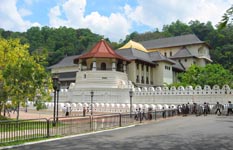
Kandy
